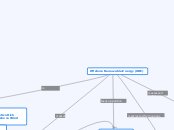Offshore Renewable Energy (ORE)
Socioeconomic benefits
(Heslop et al, 2014; The Scottish Government, 2013)
Community benefit payments
(Allan et al, 2015; Bailey et al, 2014)
Reduced power bills
(Bailey at al, 2014)
Job Creation
(Allan et al, 2015;
Regeneris Consulting, 2012; OffshoreWINDbiz, 2014)
Increased GVA
(Regeneris Consulting, 2012)
Investment in ports & harbours
(Offshore Wind Journal, 2016)
Increase in skilled workers
(Regeneris Consulting, 2012; Offshore Wind Journal, 2016)
Increase in health/quality of life
(Hattam et al, 2015)
Sources of ORE
(Heslop et al, 2014)
Wind power
( Bailey et al, 2014; Hattam et al, 2015; Heslop et al, 2014)
Wave power
(Allan et al, 2015)
Geothermal power
(Heslop et al, 2014)
Hydropower
(Heslop et al, 2014)
Tidal power
(Allan et al, 2015)
Local community
(Bailey et al, 2014)
Place attachment ('Not In My Backyard')
(Bailey et al, 2014; Hattam et al, 2015)
Multi-Criteria Analysis
PROMETHEE method
(Heslop et al, 2014)
TOPSIS method
(Brennan et al, 2011)
UK
(Hattam et al, 2015)
Scotland
(Heslop et al, 2014; The Scottish Government, 2013; Offshore Wind Journal, 2016)
England
(OffshoreWINDbiz, 2014)
Wales
(Regeneris Consulting, 2012)
